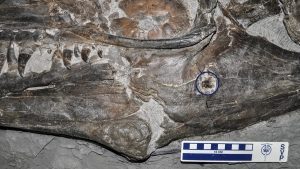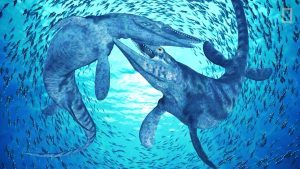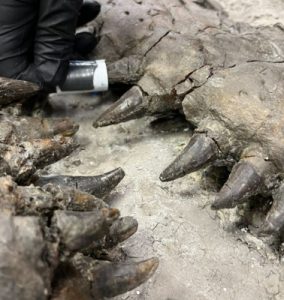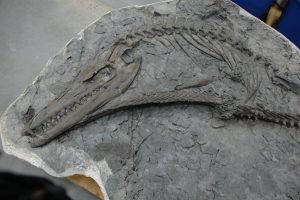The fossil discovery in Alberta, Canada’s Korite International Ammolite Mine provides a rare glimpse into the dietary habits and interactions of Mosasaurus missouriensis, a type of marine reptile from the Late Cretaceous period.

The small Mosasaurus specimen was found with the remains of its last meal, a three-foot-long fish called a grinner. The fish bones inside the Mosasaurus showed signs of bite marks, indicating a violent end.
The researchers, led by Takuya Konishi and colleagues from Canada’s Royal Tyrrell Museum, suggest that the Mosasaurus likely grabbed the fish and tore it into more manageable pieces, swallowing each piece separately.

This feeding behavior differs from other mosasaurs, such as Prognathodon, which had a different diet, including fish, sea turtles, and possibly ammonites, and was considered a “Crunch” feeder.
The discovery sheds light on the varied feeding strategies among mosasaurs and their role as apex predators in the Late Cretaceous seas.

Interestingly, despite being an apex predator, the Mosasaurus specimen found in the ammolite mine did not survive long after its last meal. Its body was scavenged by at least three sharks, leaving behind teeth marks and bite patterns on the mosasaur’s bones.

The researchers propose that one of the large sharks may have even contributed to the positioning of the Mosasaurus skeleton by dragging its tail beneath its body.

This fossil find provides valuable insights into the complex interactions and ecological relationships among marine reptiles, fish, and sharks during the Late Cretaceous period.





